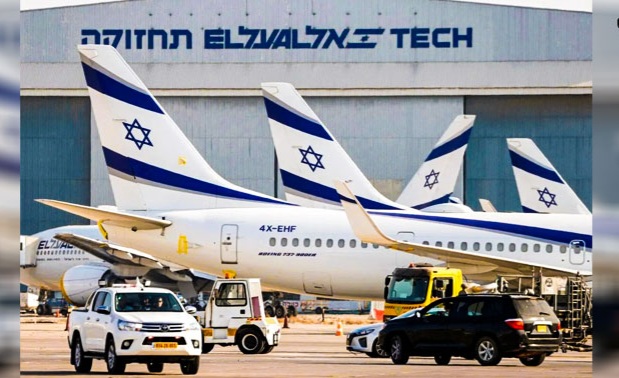Alwaght- In need of the Arab countries to break its decades-long security and political isolation, the Israeli regime makes constant diplomatic moves to get closer to these countries. Although many of the Israeli meetings with the Arab officials take place secretly and are given no publicity by the media, they are usually publicized by the Israelis themselves to break an Arab taboo of relations with Tel Aviv.
Recently, media reports suggested that a high-ranking Israeli delegation flew to Oman and talked with the Omani Foreign Minister Badr Albusaidi about bilateral relations.
The Israeli broadcaster i24 reported that the meeting took place on the sidelines of Middle Eastern Desalination Research Center forum (MEDRC) and attended by Deputy Director General and Head of Middle East & Peace Process Division.
According to the Israeli news network, the opening of Oman's airspace to Israeli flights was one of the most important agendas of the meeting. In return , the Israeli side offered Oman to join the Negev Forum and cooperate in a number of regional projects, focusing on what is in the interest of the Palestinians, in order to get Muscat green light for the flights.
The opening of Oman's airspace to Israeli planes is of great importance to the Israelis. Tel Aviv has extensive interactions with the countries of South and East Asia, especially India and China, and therefore, there are several daily flights from Tel Aviv to Asian countries. The Israeli leaders are trying to cut the travel time and costs. If Oman, like Saudi Arabia, allows Israeli planes to pass through its skies, this dream will come true to a large extent.
Additionally, in order to fly to East Asia, Israeli planes have to pass through the extreme end of the air borders of UAE, which is near the Strait of Hormuz, and because of the proximity of this area to Iranian sea borders, it can be dangerous for the Israelis. With the level of tensions between Iran and the Israeli regime increasing day by day, Tel Aviv officials are worried for the security of their air trade over the Persian Gulf skies. In order for the Israelis to travel to East Asia safely and without any fear, they need Oman's assistance to complete the air corridor from the occupied territories to East Asia and to make their trips in the shortest possible time. But Muscat leaders have so far turned down these requests.
A step to normalization
The Israeli goals go beyond getting the permission for their flights over Oman.
Certainly, the regime in recent years considers any establishment of relations with Arab countries as part of the normalization project and, therefore, Oman is also covered by this agenda to be brought inside the process.
Although Oman has repeatedly said that it will not be the third country in the Persian Gulf to normalize its relations with the Israelis and has made any interaction with this Tel Aviv conditional on adoption of the two-state solution in the occupied territories, the Israelis are not disappointed and continue their efforts.
The Israelis are trying to build a bridge to normalization by airspace initiative, because the passing of Israeli planes through Oman's airspace and occasional stops under the pretext of refueling can be a prelude to further interactions and finally normalization in the future. In recent years, Tel Aviv officials have repeatedly claimed that Oman will be the next Arab country to join the normalization process, but no progress has been made so far.
The Israelis view even small relations with Arab countries as a pass to their legitimacy in the Arab world, and the use of airspace can provide Tel Aviv with a propaganda tool to propagate the idea that Oman is joining the thaw.
On the other hand, the Israelis do not just aim at civil and commercial aviation. Rather, driven by their secret programs against the Muslim countries, they seek to use these air routes to advance their military objectives.
During its presence in the Persian Gulf facilitated by the UAE since last year, the Israeli regime showed it focuses on pushing against the Iranian influence in the region, and striking arms deals and deployment of air defense systems, as well as dispatching spying drones, in the UAE and Bahrain, are indicative of activating Tel Aviv’s plans against Iran. For Oman, as well as Saudi Arabia, there are similar plans and possibly the Israelis would use these countries’ airspace for military aims including arranging fighter and drone flights.
Engaging in economic relations with Oman, at a limited level, is not what satisfies the Israelis. Rather, opening embassies, Israeli citizen travels to Oman, and consequently penetration of security and cultural layers are the goals of the Israelis behind normalization project. The Arab airspace is set as a bridge to these goals.
But, given the fact that for decades Oman has been adopting ‘neutrality island’ policy and is not poised to engage in regional disputes, normalization is no exception, because the Israeli presence would transform the country into a confrontation ground for Tehran and Tel Aviv, while Omani leaders do not intend to be part of this confrontation.



























